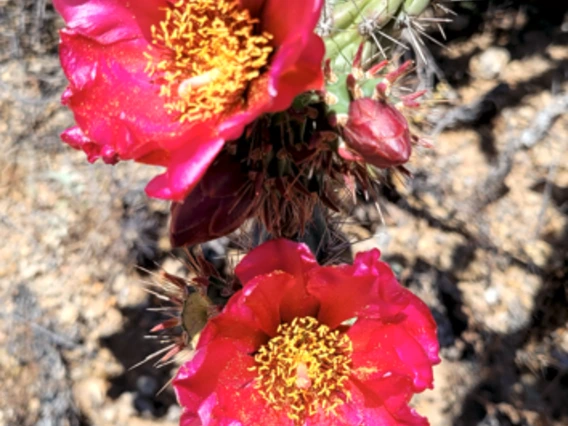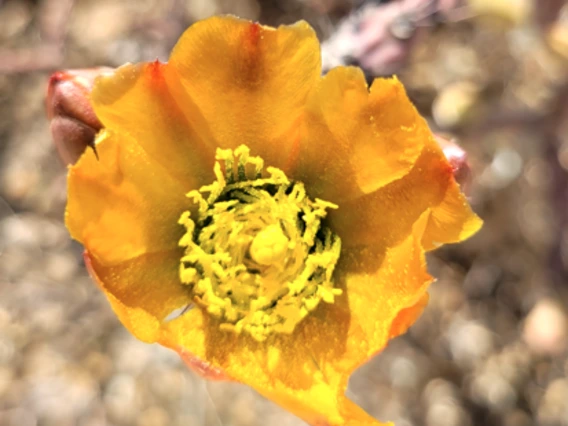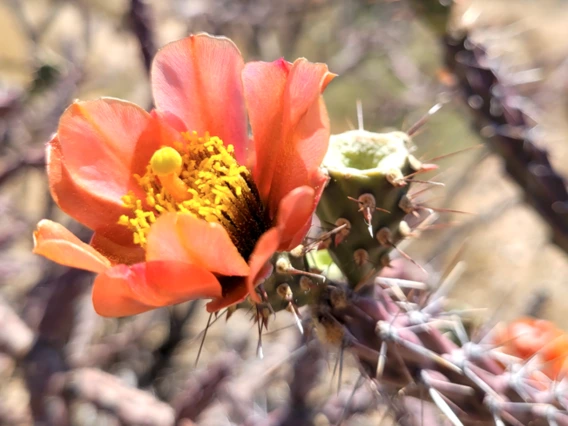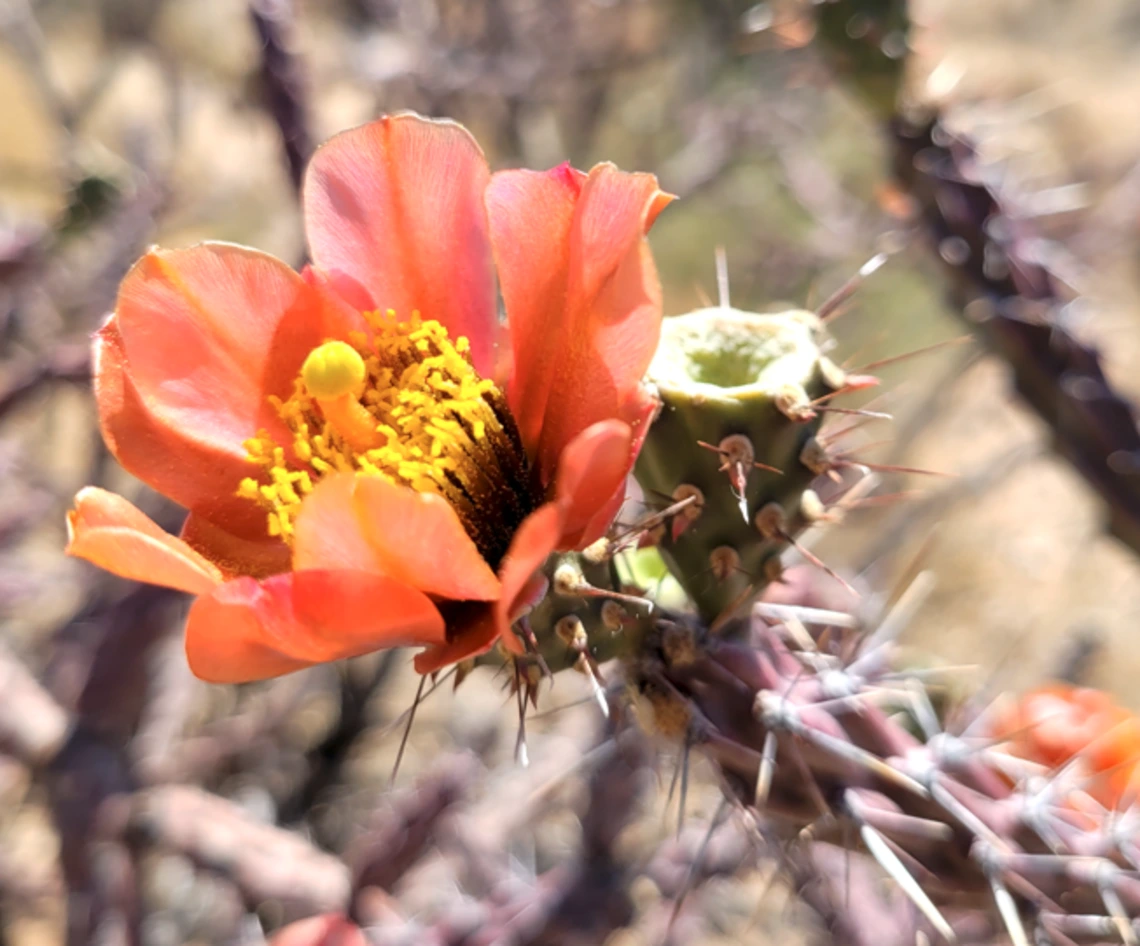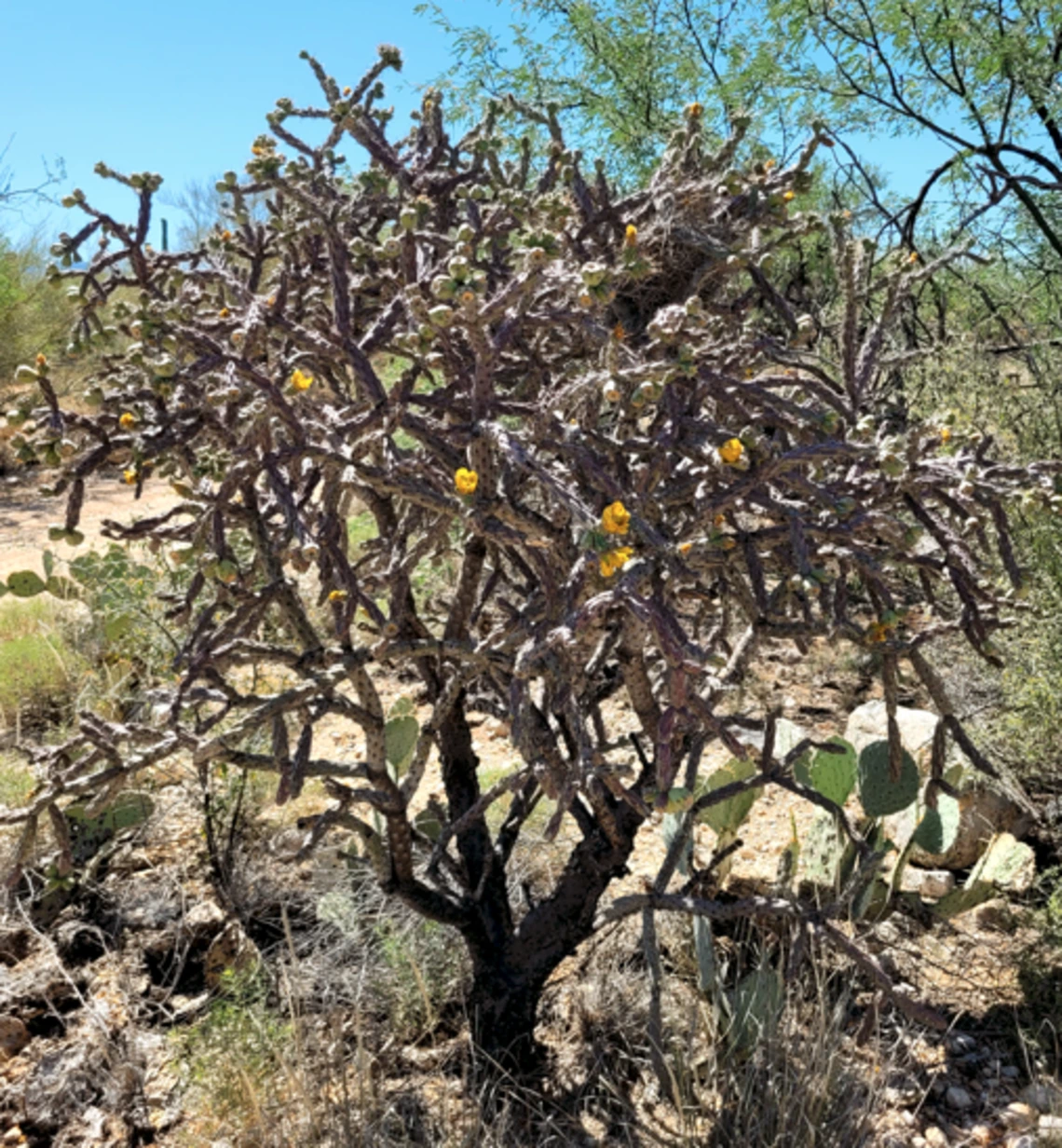Family: Cactaceae
Compound: Cyl thu
Synonyms: Cylindropuntia alamosensis, Opuntia thurberi
Geographic Origin: southeastern AZ, northern MX
Characteristics: A medium to large cactus that can exceed 2.4m (8ft) in height taking the shape of a small tree with a distinct woody trunk. The spiny, segmented stems are green to blue-green, often turning a vibrant red or purple due to sun stress. Blooms in the late spring, producing vibrant flowers varying from yellow, to orange and red depending on the individual. Flowers are roughly 5cm (1.5in) in diameter. These blooms are followed by indistinct, spinless, fruits that are difficult to distinguish from stems at a distance.
Natural History: Typically found on rocky hills, and bajadas where it can form a dense forest of tree-like individuals. Used by birds for nesting sites.
Cultivation Notes: Thurber's cholla is well-suited for desert gardens due to its minimal water requirements, vibrant color, and striking appearance. It thrives in full sun and well-drained soils and is highly drought-tolerant once established. Propagation is typically achieved through stem cuttings, which should be left in open air while the cuts callous over before being planted in soil. Take care to avoid spines when handling cuttings.
For general cactus and succulent propagation information, click here
Ethnobotany: The plant is often used in xeriscaping and desert landscaping for its aesthetic appeal and its ability to provide habitat and protection for desert wildlife. Historically, the flower buds been utilized by native peoples for food.
Citations:
SEINet Arizona – New Mexico Chapter. Retrieved April 30, 2024.
Arizona Sonora Desert Museum. Retrieved April 30, 2024.


